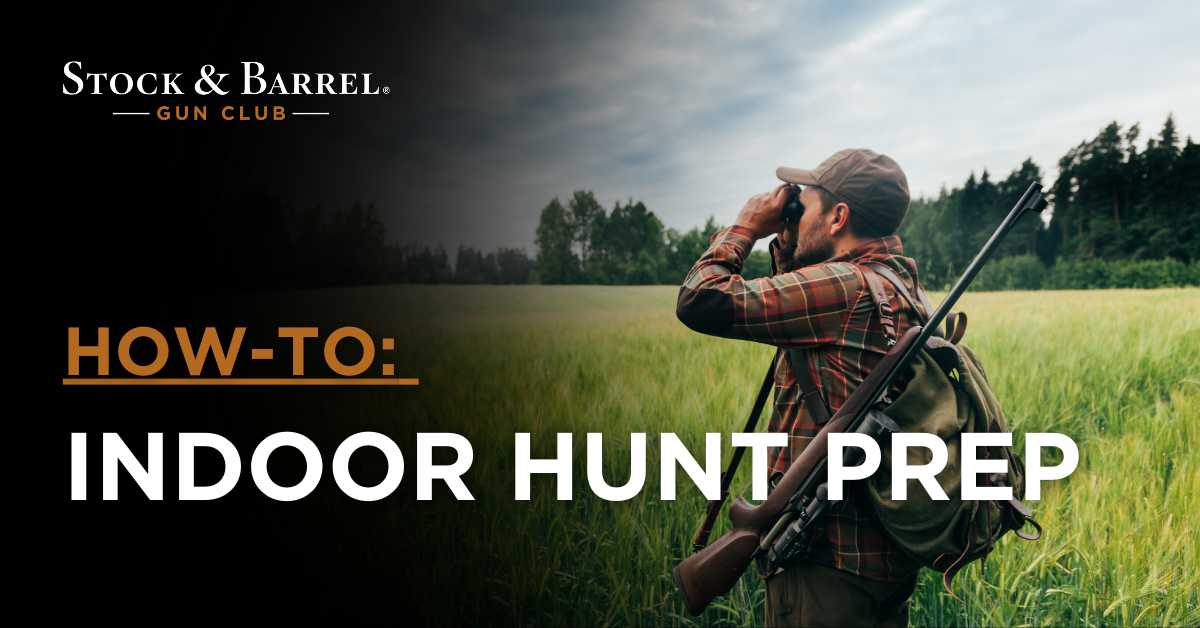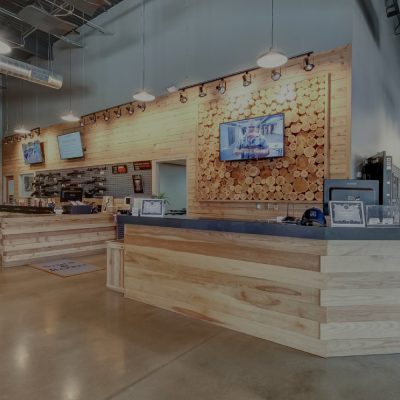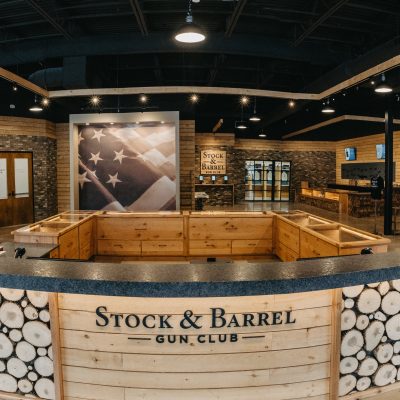Hunting season – for some, is the most wonderful time of the year. Far more than the thrill of the chase, hunts carry deep significance ranging from harvested food to cultivated memories. While there are large amounts of time and attention spent on physical hunt prep (what to pack) or hunter’s education/licensure, marksmanship training specifically for hunting season is a topic rarely discussed in any great depth. The conversation becomes even more constrained when talking about how to train for hunting season on an indoor range. On the surface, it would appear indoor ranges are simply incompatible with the task of hunt prep. But, for some, this may be the only type of facility available to them. While the challenge of reconciling the two is steep, it’s not insurmountable. Here are some tips, tricks, and ideas for how to overcome the hurdles of utilizing an indoor range to train for hunting season.
CALIBER RESTRICTIONS
Many indoor ranges limit the calibers you can shoot in their facility. At Stock & Barrel, we allow every caliber UP TO .50 caliber. No shotgun pellets smaller than BuckShot & no muzzleloaders. However, if the range you’re at has tighter restrictions, the easiest way to overcome this is to downsize the rifle you use for indoor training/shooting, making sure it is set up similarly to your primary hunting rifle. If you hunt with a Modern Sporting Rifle (AR-type rifle) this could be as easy as a rimfire conversion kit that would allow you to shoot the exact same rifle in a different caliber. If you use a more traditional bolt action rifle, it can be as simple as pulling out that trusty rimfire .22 or .17. While you lose the element of recoil control compared to your full-sized rifle, the fundamentals of marksmanship do not change. And parent tip – this is great for new hunters to build solid fundamentals before the noise and recoil come into play. In some respects, shooting rimfire can actually be more difficult as there is almost no recoil to disturb the rifle – meaning almost all excess motion is shooter-induced. This will make any little imperfections in your marksmanship technique painfully obvious.
Since the fundamentals of marksmanship are, indeed, universal there’s an argument to be made that it doesn’t matter what kind of gun you use to train for hunting season. If your only rimfire rifle is a .22 caliber AR but your hunting rifle is a bolt action .30-06, it shouldn’t make any difference. To a degree, this is certainly true. But one must be careful to ensure that their training is as close as possible to their practical application. Training on a semi-auto rifle while hunting with a bolt-action rifle will create some conflicting “muscle memory” especially in regard to follow-up shots. It’s not a complete deal-breaker, but it should be considered against your current skill level and comfort transitioning from one action type to another.
Of course, if your primary hunting caliber is permitted at your local indoor range, all this is a moot point. We recommend taking your actual hunting rifle to the range for practice as often as possible.
DISTANCE DIFFERENCES
Most indoor ranges are limited in the maximum distance they can offer. There are indoor lanes as short as 10 or 15 yards but can stretch out to 100 yards or longer based on layout. Depending on your hunting grounds and available local ranges, you may get lucky and wind up with similar distances. For example, we have 25-yard lanes, and you hunt in a heavily wooded area where most shots are 100 yards or less, the distance gap between training and application is relatively small. However, if your hunting grounds afford 200-, 300-, or 400-yard shots, there becomes a much greater difference with our 25-yard training range. However, much research has shown how you can zero a firearm out to 100 yards with a 26-ish-yard shot. The easiest way to scale for the lack of distance is to reduce the size of the target. If you’re looking to hit a 6-inch or 8-inch circle at 300 yards, try hitting a 1-inch circle at 25 yards. As long as your rifle can hold 1 MOA (or better) groups it will be mechanically capable of putting multiple hits inside a 1-inch circle at that 25-yard line. But doing so will demand a high degree of consistency in sight picture and trigger press. Even if you’re training at a fraction of your expected distance, this challenging level of accuracy will translate to better, repeatable groups at longer ranges. Small targets are especially challenging for follow-up shots, if your rifle must be manually cycled – as with lever- or bolt-action rifles. Holding a 5-shot, or even a 3-shot group, inside a 1-inch circle, when the action must be manipulated by hand every time, is no small feat. This is where your technical marksmanship can be greatly refined. Think about placing your hand back on the stock or your finger back on the trigger in the exact same place after cycling the bolt multiple times in a row. Or how much your cheek weld is disturbed by these movements. Even if you are restricted to a short range, these skills can be built to good effect even out in open terrain.
PARTING SHOTS
You may not be able to recreate the conditions of your perfect field shot at an indoor range. There is no replicating the morning chill, the gray-blue light of daybreak, the tense waiting in a blind or tree stand. But you absolutely can, and should, take advantage of your indoor range’s controlled conditions to perfect your shooting technique and weapons manipulation in order to reduce the number of internal variables that could affect your game-getting trigger press.
Other Articles You May Be Interested In:
- Why Choose An Indoor Range
- What You Should Expect In A Shooting Range
- What To Look For In Your Local Shooting Range
Classes You May Be Interested In:
- Modern Handgun Maintenance In Chanhassen Or Eagan
- Ar15 Maintenance In Chanhassen Or Eagan





